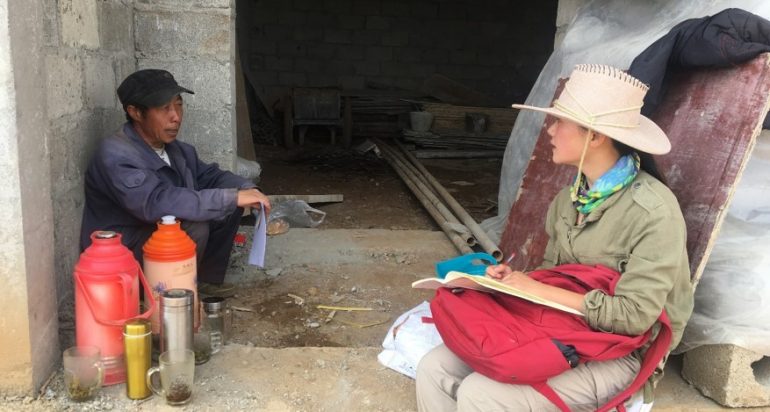Wanting Peng, former visiting scholar with the Spatial Sciences Institute and the USC School of Architecture Landscape Architecture program, has published “Predicted effects of Chinese national park policy on wildlife habitat provisioning: Experience from a plateau wetland ecosystem” in Ecological Indicators (Volume 115, August 2020, 106346).
Peng is pioneering the analysis of the effects of conservation policy on the wetland ecosystems in China. Her study area is the Danshanbao Protected Area (DPA) in southwest China, the habitat of the threatened black-necked crane (Grus nigricollis). China’s national park administration is using payment for ecosystem services (PES) and the relocation of human residents from within the DPA to areas outside of the DPA as conservation management strategies to convert farmland to wetland needed to enhance the crane’s habitat.
In this article, Peng and her collaborators share the results of their research into the efficacy of these two habitat conservation approaches. To better understand the potential outcomes of these programs, Peng and her colleagues combined field survey data with environmental variables and land use maps to model the winter foraging habitat of the black-necked crane with respect to human settlements subject to PES and relocation.
They found that the payment for ecosystem services programs increased the probability of the cranes’ occurrence by changing land cover in appropriate areas relative to crane roosts and other spatially distributed variables. As a result, Peng and her colleagues recommend that PES programs should be encouraged.
However, the researchers were surprised to discover that areas within one kilometer of villages were highly suitable foraging habitats for cranes, which depend on waste grain in the farmland areas in the winter. To remove the residents from these villages and thereby remove the waste grain food source could result in a relocation-induced food shortage for wintering cranes. They therefore recommend that relocation programs that change the existing long-term established human-wildlife interactions should be implemented only after these relationships are fully understood.
Peng’s co-authors on this article are Dejun Kong of the College of Agronomy and Life Sciences, Kunming University and the Ministry of Education Key Laboratory for Biodiversity Sciences and Ecological Engineering, College of Life Sciences, Beijing Normal University; Chengzhao Wu of the Department of Landscape Architecture, College of Architecture and Urban Planning, Tongji University, and the National Park and Natural Protected Area Planning Research Center, Key Laboratory of Ecology and Energy-saving Study of Dense Habitat, Ministry of Education, Tongji University; Anders Pape Møller of the Ministry of Education Key Laboratory for Biodiversity Science and Ecological Engineering, College of Life Sciences, Beijing Normal University; and Travis Longcore, adjunct associate professor with the Institute of the Environment and Sustainability, University of California, Los Angeles.
During her two-year visiting scholar appointment at USC from August 2017 to September 2019, Peng worked on this research with Dr. Longcore, then on the faculty of the Spatial Sciences Institute and the USC School of Architecture. Peng and Dr. Longcore involved students in the Spring 2018 SSCI 412L GeoDesign Practicum course in this research. Peng presented this research in a Spatial Sciences Institute Brown Bag talk and has published other aspects of this research in the article "What factors influence the willingness of protected area communities to relocate? China’s ecological relocation policy for Dashanbao Protected Area” in Science of The Total Environment (Volume 727, 20 July 2020, 138364).
John P. Wilson, Ph.D., professor and founding director of the Spatial Sciences Institute, congratulated Peng on the publication of her research while with SSI. He noted, “These are nicely crafted and important manuscripts. We are proud that the spatial modeling work Wanting was able to accomplish working here with our faculty and students could contribute in such tangible ways to habitat conservation approaches in China.”
Peng is a Ph.D. candidate in Landscape Architecture at Tongji University in Shanghai, China.




